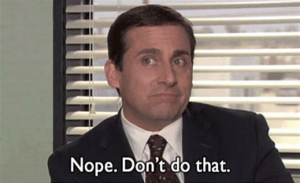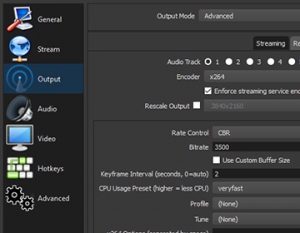Whether it’s caused by difficulties at home, challenges at work, or turmoil in the world, stress is ubiquitous. And unfortunately, it’s not going away. When we don’t recognize and manage our stress, it can be detrimental to our success at work, to our relationships, and to our health.
For this new year, make a commitment to taking better care of your wellbeing by developing some tools to mitigate stress, navigate stressful situations more effectively, and build up your strength to handle the stressors heading your way. Here are a few techniques that can help you handle your stress better in 2024.
Identify and mitigate daily stressors
British-Canadian writer Robert W. Service once wrote “It isn’t the mountain ahead that wears you out; it’s the grain of sand in your shoe.”
If we want to get a handle on our stress, we have to start small. Every day, annoyances, interruptions, and slights chip away at our resilience. Often, they are so tiny or so commonplace that we don’t even realize that it’s happening. We walk in our front door and our stomach clenches, but we don’t recognize that it’s because our spouse’s shoes are scattered across the entryway—again. We sigh at the caller ID signifying a coworker’s newest request for information that he could have gotten without interrupting us, but we pick up the phone nonetheless.
These are small energy drains, but over time, they leave us with less and less of a reserve of energy to handle the matters that are actually important.
The first step, then, is to begin to recognize those small energy drains. One for me is the Legos that my kids strew across my home. Perhaps for you it’s the dishes piled in the sink, or traffic, or a rude colleague. Another common energy drain is “doom scrolling”—addictively reading or watching depressing or upsetting digital content.
Once you’re identified a stressor, you have an opportunity. Now you can try to minimize, or even eliminate it. Have a conversation with your spouse about the shoes, or with your coworker about the endless data requests. Limit yourself to a fifteen-minute social media check-in, and then put down the phone. I designated a spot in my house as our “Lego Room,” and I don’t go in there. A little focused attention on the stressor that you’ve identified can go a long way in relieving that drain of your energy.
Manage the stress that can’t be avoided
We won’t be able to rid ourselves entirely of stress, of course. For those stressors that nonetheless arise, it’s helpful to have a few tools.
First, remember to breathe. A deep, slow breath increases your brain function and calms your nervous system. One of my favorite breathing techniques is 4-7-8 breathing, but there are many that work.
Second, check in with yourself. How are you feeling? Are you angry, frustrated, scared, or jealous? Simply labeling your emotion can help you to feel more in control of it. A phrase to help remember this technique in the moment is “name it to tame it.”
Third, take a break. Go for a walk, switch off the news to music, or talk with friends. A quick break can do wonders for your creativity, productivity, and calm.
Maintain a daily reset
Every day you brush your teeth, exercise, and prepare healthy food, because you know that it’s necessary for your physical health. In the same way, you need to take steps each day to protect your mental health. Guarding against burnout is one of those areas where the best defense is a strong offense. The better our equilibrium you establish to begin with, the better you’ll be able to manage the storms heading your way.
Thus, it’s worthwhile to develop and maintain a routine of self-care, or what I like to call a daily reset—something that you do every day to buoy your mental health.
A daily reset might be walking the dog in the morning, playing the guitar for fifteen minutes at the end of the workday, or a meditation before bed. Every morning, I do a little meditation and write down the things I’m grateful for that day. The daily reset can be anything from art to exercise to stillness, but the key is that you do it regularly, and that it replenishes your energy reserves.
It’s better to start slowly and build up over time. For instance, don’t commit to going to the gym for an hour every day if you aren’t already going to the gym for an hour every day. Instead, try a five-minute stretching routine or a lunchtime stroll. The goal is consistency—it would be better to meditate for five minutes every day than to do a weeklong meditation retreat once a year.
Finally, try not to sacrifice your daily reset during hectic times, despite the temptation. That is precisely when you need it most.
Consider larger life shifts
Once we’ve managed our energy drains and begun to build our resilience through a daily reset, we may want to work on some larger life shifts to protect our wellbeing. Here are a few to consider.
Boundary setting. To maintain our energy for things that really matter to us, we have to be willing to say “no” to the things that don’t. Recognize that your energy is finite and worthy of protection. It’s not just okay to say “no” to unimportant things, it’s essential.
Build a community of support. No one gets through this life alone, certainly not if we want to build a life of success and happiness. Maintain relationships with friends and colleagues to provide you with the support you need to better enjoy the good times and get through the hard times.
Recognize your warning signs. Have you heard the expression, “the universe whispers first, and then it shouts?” We have to get better at recognizing the whispers—those signs that we’re beginning to suffer from burnout. Perhaps it’s a shorter temper, insomnia, or a persistent sore throat. Recognize the signs that you are beginning to suffer from burnout, and when you see them, recommit to all of the self-care techniques discussed here.
We can’t get rid of all of the stress in our lives, but we can take steps to mitigate it, and get better at supporting ourselves through it. Protecting our energy is the only way to ensure that we have it for the really important things in our work and our lives. Better resilience can be built through identifying and addressing small stressors, practicing a daily reset, and considering the larger life shifts that will allow us to thrive.
(19)
Report Post







